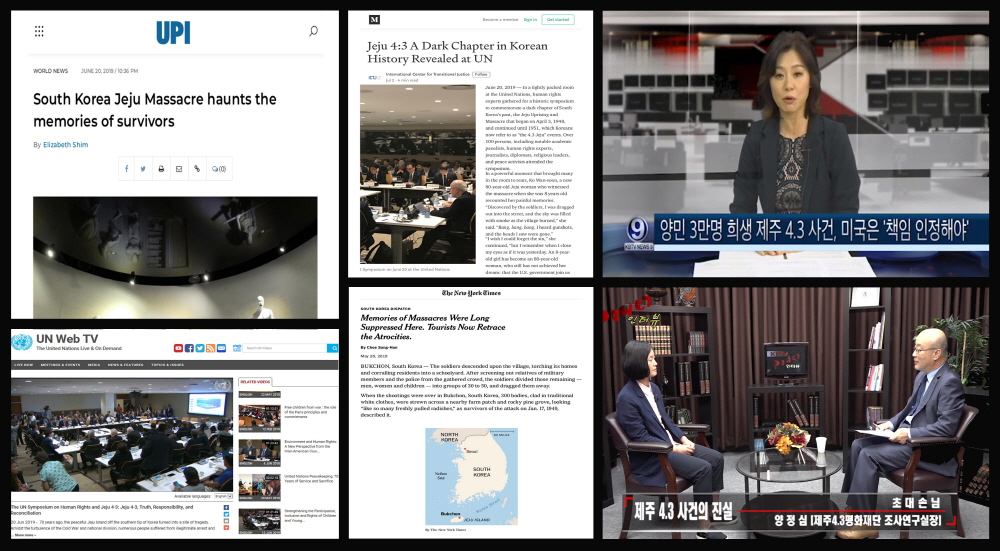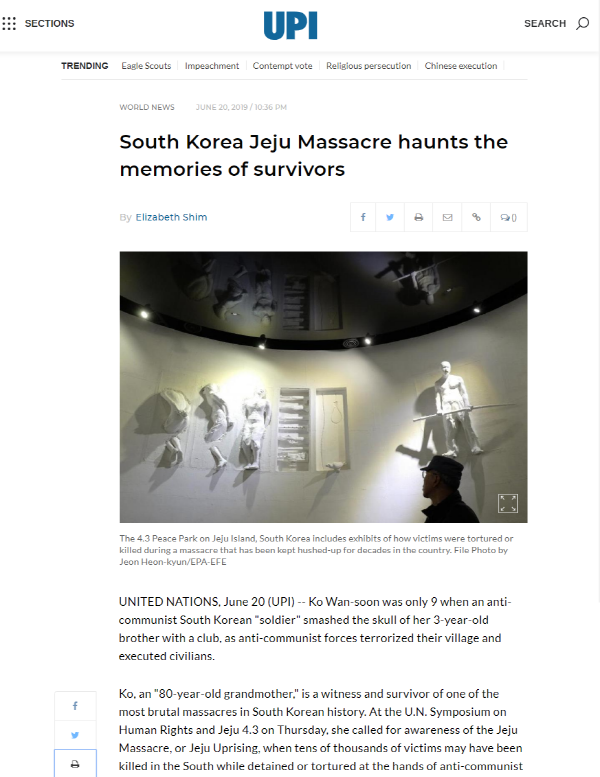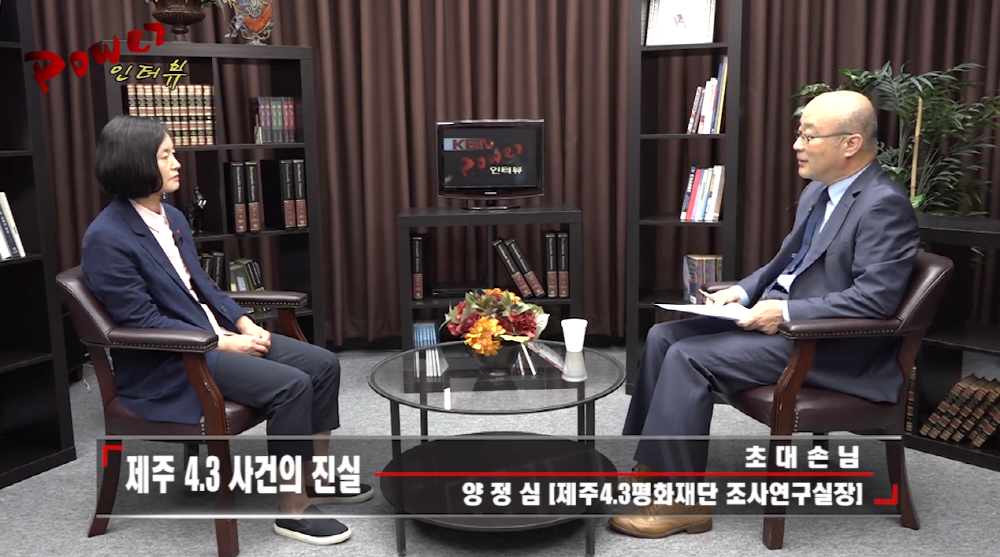Jeju 4·3 induces a butterfly effect… followed by American media and 4·3 symposium coverage
 Full-scale articles in UPI, The New York Times, and U.N. Web TV broadcast reflect the growing global attention to the Incident
Full-scale articles in UPI, The New York Times, and U.N. Web TV broadcast reflect the growing global attention to the Incident
Before and after the opening of the U.N. Symposium on Human Rights and Jeju 4·3 held in New York on June 20, media in the United States produced lengthy articles on what really happened during Jeju 4·3, which reflects that the incident is becoming a global issue.
United Press International (UPI), one of the authoritative press agencies in the United States, made a detailed report on the symposium the day of the event under the headline South Korea Jeju Massacre haunts the memories of survivors.
UPI introduced the testimony of Ko Wan-soon, a bereaved family member who suffered during the Bukchon Village Massacre, and added that Ko’s story was only one example of the experiences of countless victims, many of them women, children, or the elderly, targeted for the actions of armed guerrillas, who were active on Jeju Island following liberation on Aug. 15, 1945.
UPI also reported that Ko is a witness and survivor of one of the most brutal massacres in South Korean history and that she called for awareness of the Jeju Massacre, or Jeju Uprising, when tens of thousands of victims may have been killed.
 In the article, Bruce Cumings, a renowned historian and a distinguished service professor of history at the University of Chicago, is paraphrased as having said that during the event the U.S. military, which had operational control of the South’s security forces following Japan’s surrender, play a role in the massacre.
In the article, Bruce Cumings, a renowned historian and a distinguished service professor of history at the University of Chicago, is paraphrased as having said that during the event the U.S. military, which had operational control of the South’s security forces following Japan’s surrender, play a role in the massacre.
The article continues: U.S. officials instead praised first South Korean President Syngman Rhee’s ‘vigorous’ anti-communism in the documents, favoring his hard-line policies over those of Chiang Kai-shek, the leader of the Republic of China.
UPI quotes the historian as having said: It made me ashamed.
UPI also cited Yang Jo-hoon, president of Jeju 4·3 Peace Foundation who co-hosted the symposium, as having said both past United States’ and former dictatorial regimes of South Korea are responsible for 4·3.
He said, we seek truth and justice, for a true reconciliation, UPI reported.
Medium, a news platform, published on July 2 a lengthy article titled Jeju 4·3, A Dark Chapter in Korean History Revealed at UN by The International Center for Transitional Justice.
The article scrutinizes the event, from its background and development, which took place under the U.S. Military Government in Korea, historical facts that approximately 30,000 civilians were massacred, taken into custody, tortured, and went missing, to the enactment of The Special Act on Discovering the Truth of the Jeju 4·3 Incident and Restoring the Victims’ Honor followed by the official apology from President Moon Jae-in in 2018.
Also, the article cited Professor Baik Tae-ung from the University of Hawaii Law School and a member of the U.N. Human Rights Council Working Group on Enforced or Involuntary Disappearances, emphasizing the need for domestic and international efforts to present substantial compensation for victims, gain access to the U.S. National Archives, continue with the exhumations of bodies, and to pay respects to the souls lost.
Impact News Service, a news agency based in France, covered the progress and character of the symposium on July 2 under the title of Jeju 4·3 Movement Holds Historic Event at UN.
Meanwhile, U.N. Web TV, an online medium run by the United Nations, broadcast the entire 3-hour-long symposium live, which became available by search from all over the world.
 Korea Broadcasting TV (KBTV), a Korean broadcast channel in New York, provided two news pieces: Lifting the veil over Jeju 4·3 Incident involving 30,000 residents as victims at UN, and The U.S. should admit its responsibility on Jeju 4·3 Incident where 30,000 innocents were massacred. The Korea Broadcasting Network (KBN) News in New York made an in-depth report with an interview with Yang Jeong-sim from the Jeju 4·3 Peace Foundation in its show Power Interview, examining the truth of Jeju 4·3 Incident and the results of the U.N. symposium in detail.
Korea Broadcasting TV (KBTV), a Korean broadcast channel in New York, provided two news pieces: Lifting the veil over Jeju 4·3 Incident involving 30,000 residents as victims at UN, and The U.S. should admit its responsibility on Jeju 4·3 Incident where 30,000 innocents were massacred. The Korea Broadcasting Network (KBN) News in New York made an in-depth report with an interview with Yang Jeong-sim from the Jeju 4·3 Peace Foundation in its show Power Interview, examining the truth of Jeju 4·3 Incident and the results of the U.N. symposium in detail.
Moreover, Korean newspapers in the United States, such as The Korea Jungang Daily and The Korea Times, covered the U.N. symposium. A blog article in US Minjoo Forum, subscribed by more than 200,000 people, made real-time reports on the event.
Beforehand, The New York Times, a renowned daily newspaper, released an on-site documentary article on May 28, with the headline Memories of Massacre Were Long Suppressed Here. Tourists Now Retrace the Atrocities.